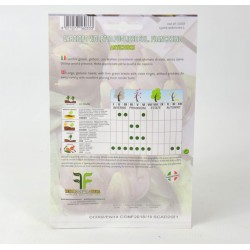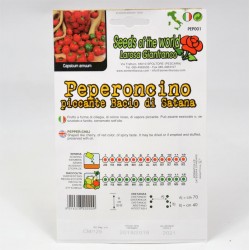Kaiser pear tree
Generalities Kaiser pear tree :
the Kaiser pear is a variety with a regular shape and completely brown and rusty skin, which makes it easily recognizable. It is harvested in late August / early September and is kept until late April. The flesh is whitish, juicy, sweet-sour and crunchy. Being very firm it is one of the best types of pear in the kitchen, because, while remaining soft, it flakes less during cooking. It is excellent baked in the oven, with a little sugar and is perfect in cakes. Delicious and aromatic, it is also delicious when eaten fresh.
- jar 16cm, height 120/150cm
- jar 22cm, height 150/170cm
Sale Kaiser Pear Tree, available in the following formats:
- jar 16cm, height 120/150cm
- jar 22cm, height 150/170cm
Generalities Kaiser pear tree :
the Kaiser pear is easily recognizable due to its regular shape and uniformly brown skin. Juicy and crunchy, the Kaiser pear variety is suitable for both fresh consumption and cooking. It is harvested in the second half of September and its tree is one of the most vigorous in the family. Another feature that makes the Kaiser pear unique is its size, as it is a pot-bellied fruit, bigger than the others and with a weight that can reach up to 250 grams. The peel is a slightly rusty bronzed color; the flesh is white-yellowish, dark, sugary and fragrant. The kaiser pears, very sweet and tasty, are rich in juice and therefore considered among the most thirst-quenching and regenerating on the market. Kaiser pears release extraordinary beneficial effects for the body and, thanks to its versatility, they can be eaten in many different ways. Kaiser pears are real health allies: in fact they act as an energizer and therefore recharge the body, help the intestinal flora, stimulate diuresis and therefore promote blood circulation, accentuate the assimilation of calcium, decrease the levels of cholesterol and blood glucose, improve eyesight and, last but not least, prevent the formation of wrinkles preventing skin aging.
Cultivation and Care of the Kaiser Pear Tree :
The pear tree is a fairly cold-resistant plant, it gives good production in hilly and mountainous areas. It also resists well in drought areas and with fairly high average annual temperatures. They require a typically neutral substrate (pH values around 6.5-7), it also adapts well to a sub-acid substrate (a pH with values around 5-5.5) or limestone with a pH of 7.5-8 . An ideal soil must be fresh, deep and medium-textured. As already mentioned, the production can take place without problems at different altitudes, from the plains to mountain areas, the important thing is that the soil and the position respect the needs of the plant.The pear tree does not require particular irrigation measures, in fact, it resists long periods of drought. A water supply can be useful in the first weeks after the young seedlings are implanted. In some areas, a lack of water in the delicate phases such as flowering and the first fruiting stages can be dangerous, in these cases it is preferable to irrigate until the rains start again. As soon as the plants are planted, fertilization with mature manure around the plants can be carried out. In the spring it is possible to make an amount of ammonium sulphate of 400g every 10 square meters of cultivation, alternatively you can use 200 grams of urea for the same surface.



















